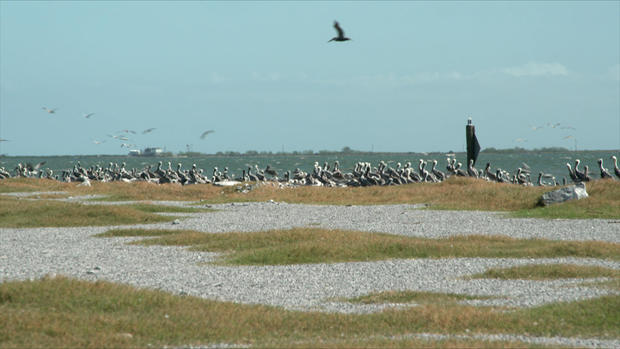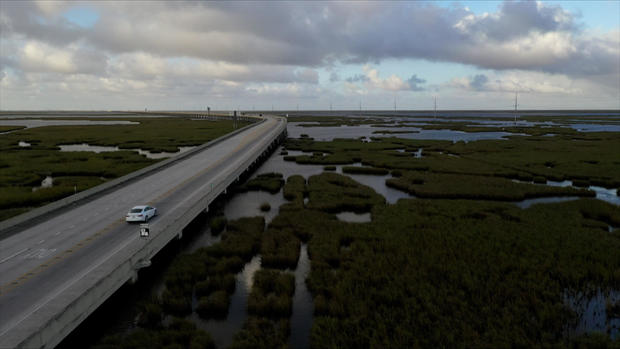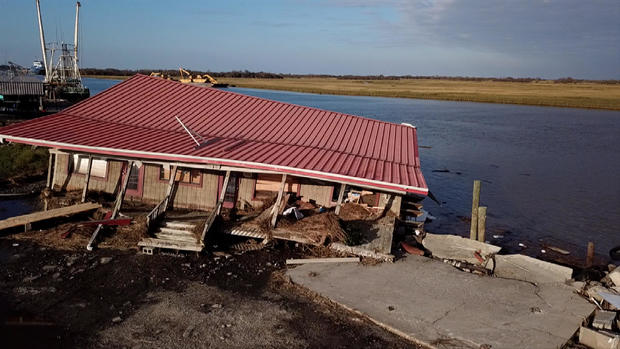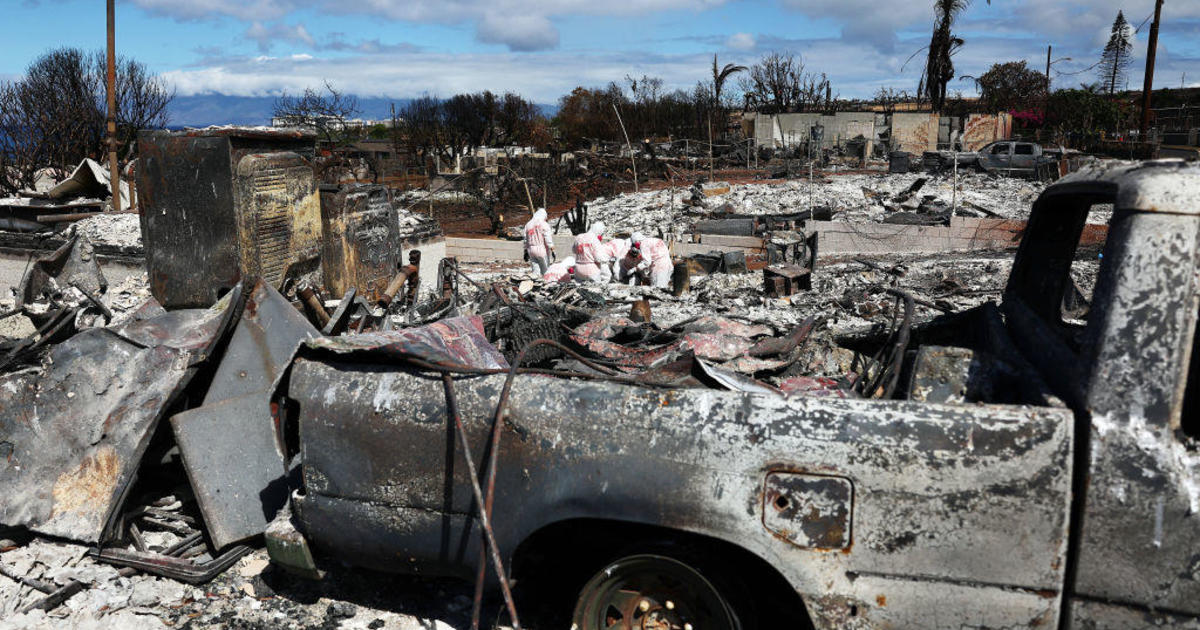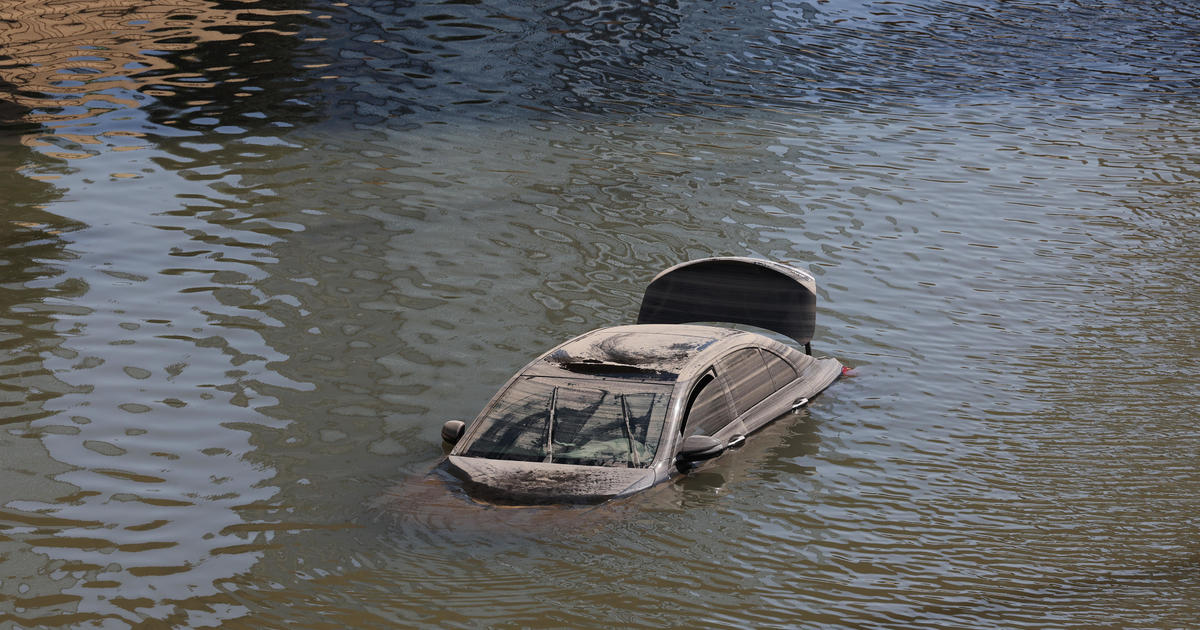Rebuild or retreat? The future of Louisiana's coastline in jeopardy
In an unprecedented year of circumstance, 2020 brought a record 12 named storms to the United States — with five striking Louisiana. After Hurricane Laura hit Louisiana in late August, some homes in Cameron Parish could only be reached by boat despite being eight miles inland from the Gulf Coast.
CBS News' Enrique Acevedo met up with Heidi Baccigalopi after another storm, Hurricane Delta, hit nearly two months later. At the time, land typically used by grazing cows remained underwater.
"For most of these people around here," Acevedo said to Baccigalopi, "it's their second or third time they've had to rebuild their home in the last 15 years?"
"From scratch. From absolutely nothing," Baccigalopi replied. "You know, cinder blocks and cement slabs. Yes."
"You have to decide, you know, where you're gonna spend your dollar," she said. "And it's either to fix this place and take the chance of something happening, or not happening, or to try to spend that dollar somewhere else."
Her husband's family has held their land for four generations, but after a record year of storms people living and working on Louisiana's Gulf Coast are having to decide whether to rebuild or retreat.
Those are the questions that fuel the efforts of people like April Newman, a project manager with Louisiana's Coastal Protection and Restoration Authority, or CPRA. When Acevedo met her in October, Newman was overseeing a 24/7 operation to expand protective barrier islands where the Gulf of Mexico meets Terrebonne Bay.
"How does everything that we are seeing here fit in the larger project to protect the Gulf Coast?" Acevedo asked Newman.
"So on this project, we have chosen the most vulnerable areas along that barrier island chain to add sand back, to nourish so that the islands can sustain themselves for longer," Newman said. "So by doing that, they're gonna protect all of the inland wetlands and all of the communities that stand behind them in the Terrebonne Basin."
A three-and-half-mile stretch of new beach should also help protect Port Fourchon, a pillar of the region's valuable energy industry.
Once completed, the project will add 1,100 acres of new land to Louisiana's coast. It's progress, but a drop in the bucket for a region that could lose 1,100 acres every two months to sea rise, sinking soil and erosion.
"We're not even saying we're gonna continue to have what we have. But we're better off than we would if we did nothing," said Darin Lee, a scientist with the CPRA.
"So that would be unrealistic to think that we're going to be able to conserve what we have right now?" Acevedo asked.
"Yeah. I mean, obviously, this is all a planning process," Lee said. "But you know, for lack of a better term ... our master plan in some ways is a manage retreat plan. We know we're not gonna have as much 50 years in the future as we have right now. Hard decisions are gonna have to be made."
Those decisions are not only focused on saving land. Queen Bess Island was restored earlier this year by the CPRA not to preserve the coastline, but to protect wildlife.
Funding for the project came from a $20.8 billion settlement from the Deepwater Horizon oil spill. That 2010 industrial disaster contaminated wildlife habitats and damaged commercial fishing in the region.
Jon Wiebe is with Louisiana's Department of Wildlife and Fisheries and helped manage the restoration and expansion of Queen Bess Island, which grew its habitat from five acres to more than 35.
"We did have some initial concerns because this is the first time that we've ever restored a historic brown pelican colony in the state," Wiebe said. "But by April of this year we started seeing groups of 10, 20, 30, 50 birds coming in at a time."
So far, $562 million from Deepwater Horizon funds have financed 13 CPRA affiliated projects and, in the past decade, created more than 4,000 acres of land and marsh.
"We can create a lot of marsh. And we've done a lot of it. And big scale, thousand acres, 2,000 acres," Lee said.
Images from the U.S. Geological Survey show Louisiana with and without its protective wetland buffer and offer a bigger picture of what the CPRA is fighting for.
"Part of our master plan is flood-proofing homes and businesses," Lee said. "We can't necessarily protect everything with a levee. We can't necessarily protect everything. So some things are gonna continue to flood."
Much of Louisiana Highway 1 from Port Fourchon to Leeville is now an elevated road because the original route flooded frequently, blocking access to the port and isolating many of the communities in the area.
The elevated highway now bypasses the small and sinking town of Leeville.
Harris Cheramie owns Leeville Seafood Restaurant. He says business dropped when the road went up, but he blames the frequency of rising tides for driving some residents away.
"This used to be a bustling community," Cheramie said. "My feeling, within — next five to 10 years, Leeville's gonna be underwater. I talked to a state engineer. He told me in 10 years Leeville sank 18 inches. So it can't continue like it is."
Eight days after Cheramie spoke with Acevedo, Hurricane Zeta hit Leeville hard and ripped the restaurant from its foundation. The family business survived three generations and numerous floods, but Cheramie says they won't rebuild.
Heidi Baccigalopi's family will rebuild, but not here. They've decided to move to higher ground, about 20 minutes farther inland. And they hope they don't have to move even farther inland in 15 years.
"That's the hope. So anytime you have a Category 4 hurricane come through, you really can't escape the wind. But you hope to escape the water," Baccigalopi said. "Just as the storm surge comes in and goes out, so do the people."

